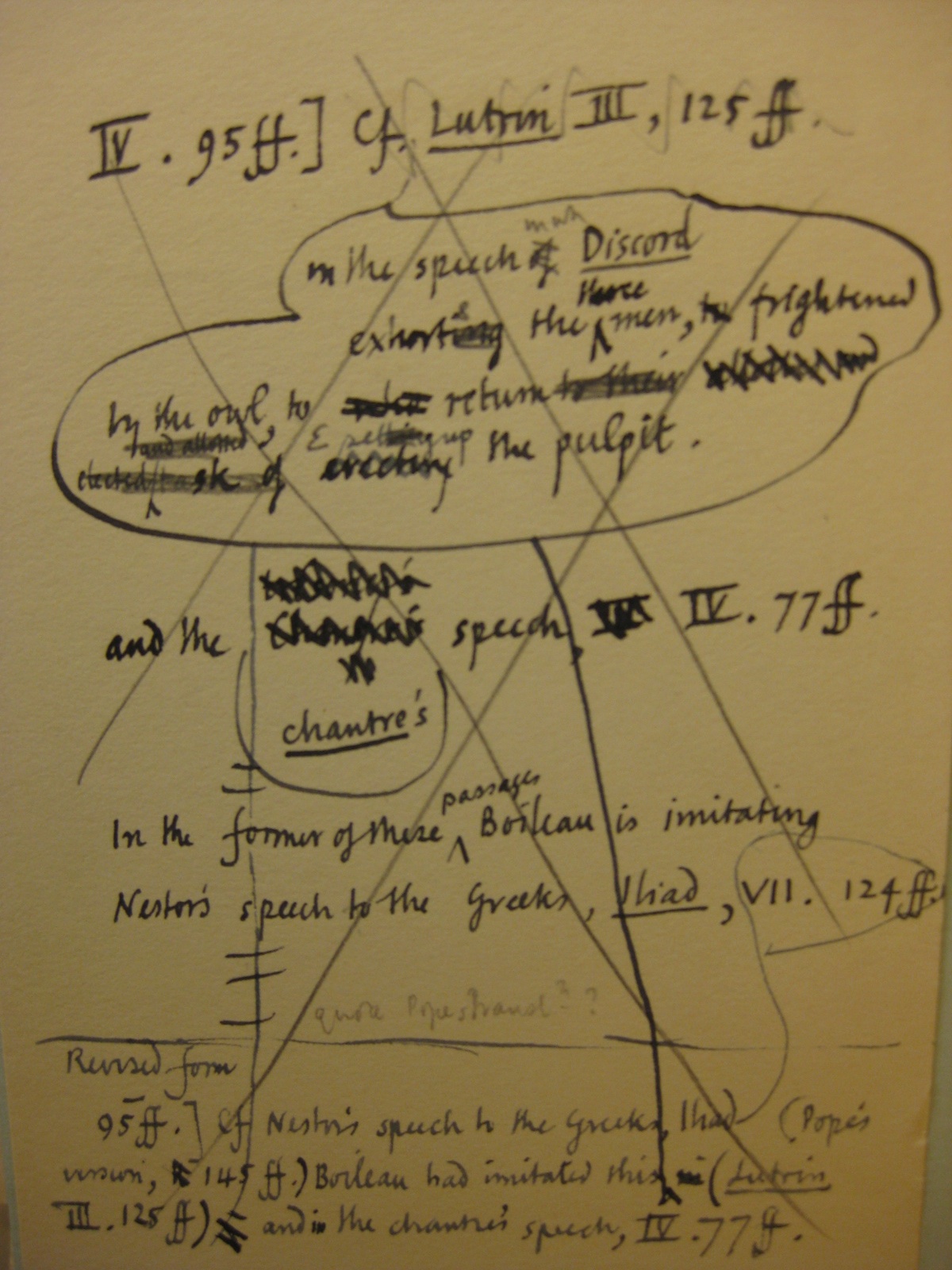
Image Credit: The Harry Ransom Center
The following post concerns my recent visits to the Hazel H. Ransom Reading Room at the Harry Ransom Center. The images, such as the one above, were derived from unpublished scholarly notes that I never would have found if I didn't use a card catalogue. Since I have been in the process of writing my dissertation in the Department of English Literature, the resources at the Harry Ransom Center have guided me toward avenues of research I did not initially expect to pursue. I would like to relate a personal narrative and a few thoughts about why I’ve enjoyed accessing the Center’s extensive and rich archive by means of the card catalogues. The views expressed below do not reflect those of the Center, but are entirely my own. I do not write from the point of view of a library scientist, although I might gesture toward their expertise in my personal reflections on old-fashioned metadata. Instead, I hope to reassert what many students at the University of Texas already know, concerning the advantage of our proximity to the Harry Ransom Center. Specifically, I would like to suggest the need to actually visit the Reading Room to realize the full extent of the possibilities for research there.
Recent comments
2 years 29 weeks ago
2 years 44 weeks ago
2 years 44 weeks ago
2 years 50 weeks ago
3 years 4 weeks ago
3 years 4 weeks ago
3 years 4 weeks ago
3 years 6 weeks ago
3 years 6 weeks ago
3 years 6 weeks ago